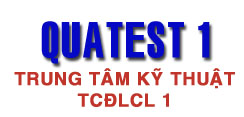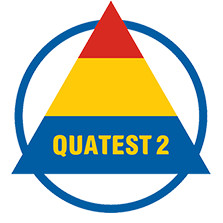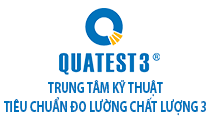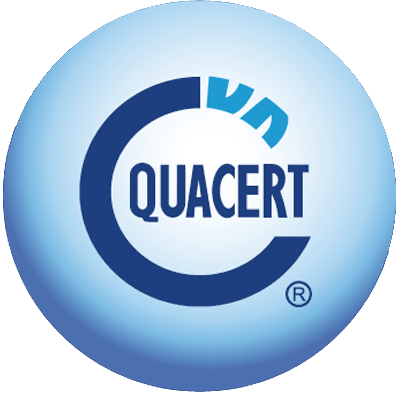Applying Total Productive Maintenance (TPM) to improve the efficiency of machinery and equipment usage
Post date: Monday, Sep 16, 2024 | 17:48 - View count: 494
Within the framework of the Program to Support the Establishment of Quality Productivity Clubs among university and college students, on the afternoon of September 16, 2024, the Commission for the Standards, Metrology, and Quality (STAMEQ) organized a training session on Topic 7: “TPM – Applying TPM to Improve the Efficiency of Machinery and Equipment Usage.”
On behalf of the Commission, Mr. Phạm Lê Cường, Deputy Chief of the Office of STAMEQ, attended the program, along with youth union members from various units of STAMEQ participating both in person and online.
Nearly 100 students and lecturers from universities and colleges participated online, representing the following institutions: Phan Thiết University, Nha Trang University, Trà Vinh University, National Economics University (Hanoi National University), Academy of Journalism and Communication, Binh Duong University, Forestry University, Thai Nguyen University of Economics and Technology, Thu Dau Mot University, Viet – Korea College of Technology Bac Giang, Hanoi University of Industry and Textile, Viet Xo Vocational College No. 1 (Vinh Phuc), Bac Giang Mountainous Area College, Quang Ninh College of Industry and Construction, and Soc Trang Vocational College.

Presenting at the training session, MSc. Nguyễn Thị Thương, Deputy Secretary of the Youth Union of STAMEQ, shared that as an overall performance management tool, Total Productive Maintenance (TPM) is becoming one of the key solutions chosen by enterprises to ensure equipment efficiency, maximize performance, enhance productivity and product quality, and create a safe working environment.
When studying Total Productive Maintenance (TPM), there are two important points to keep in mind:
First, TPM emphasizes proactive maintenance. Machinery should only stop when we intentionally halt it as part of a planned maintenance schedule, rather than due to emergency stops caused by accidents or breakdowns.
Second, TPM fosters collaboration and interaction among everyone to improve the operational efficiency of the equipment in the most effective way. The mindset of “the operator is responsible for operating the equipment, and the maintenance staff is responsible for repairs” is replaced by the belief that “You and I share responsibility for our equipment, our factory, and our future.”
TPM was formed and developed through four stages. Initially, before 1951, we were only familiar with the concept of “Breakdown maintenance”, meaning equipment was only maintained when a breakdown occurred. It wasn’t until 1951 that the concept of “Preventive Maintenance” began to take shape in the United States.
By 1971, the Japan Institute of Plant Maintenance introduced the TPM methodology, and an important element of TPM, Self-Maintenance, also began to appear from here.
Since the late 20th century, TPM has become part of the Lean Manufacturing trend, focusing on reducing production waste and being adopted by hundreds of companies worldwide.
Along with the trend of industrialization, maintenance activities have undergone different stages of development, from passive to proactive with the main types of maintenance:
Breakdown maintenance: Under this method, maintenance is reactive, meaning that repairs are only carried out when machinery breaks down and stops functioning.
Preventive Maintenance: With this method, machinery and equipment are stopped at predetermined intervals for repairs, parts replacement, and maintenance.
Corrective Maintenance: Focuses on improving equipment and components to enhance reliability and extend the lifespan of the machinery.
Preventive Maintenance: Applied to new equipment. Designers of the machinery need to thoroughly study its limitations to prevent breakdowns, facilitate easier maintenance, and prevent potential equipment failures.
According to Ms. Thương, there are seven types of waste in production: Transportation, Inventory, Motion, Waiting, Over-Processing, Over-Production, Defects
When studying TPM, in addition to understanding production waste, we must also consider the losses related to equipment, which include six types of losses: Faulty or damaged equipment, Equipment installation and calibration, Equipment idling and interruption during operation, Reduced operating speed, Defective output products , Decreased device performance – Losses occurring during startup.
The “fix it when it breaks” mindset is the main cause of the “Six Major Equipment Losses” mentioned above, and is also considered the root cause of equipment inefficiency in the production process.
The primary goal of TPM is to create a healthier and more efficient organization by enhancing the effectiveness of both equipment and personnel. Therefore, TPM has four main objectives: Zero Breakdow, Zero Defect, Zero Waste, High Morale – Business Ownership.
Nguyen Thi Thuong




















